What is DNA?-Structure, and Historical Background
This article will give you deep insight into the chemical composition of DNA. After reading this you will be able to have a better understanding of the chemical nature of DNA.
Different scientists researched for decades to know the chemical nature of DNA. Their work is explained below.
Discovery of Neuclein
A German chemist, Friedrich Fischer, discovered DNA in 1869. He discovered DNA only four years after the publication of Mendel’s work.
Miescher extracted a white substance from the nuclei of human cells and fish sperm. He called this substance Nuclein as it was associated with the Nucleus.
He observed that Nuclein is acidic. So the Nuclein was called nucleic acid.
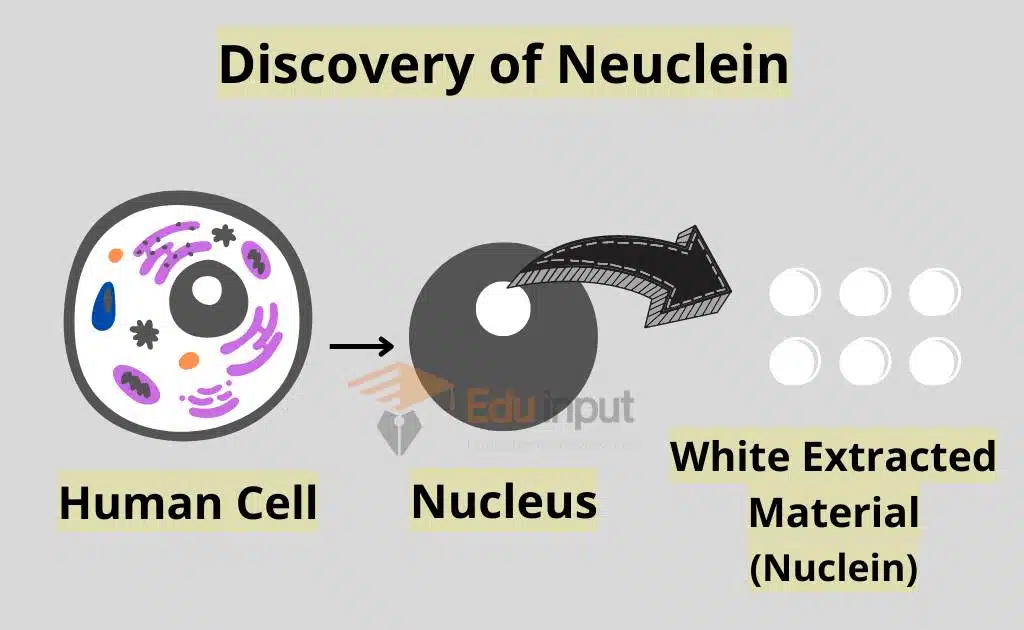
Nothing was known about the function of DNA in cells. Thus the biologists did little research on DNA for the next 50 years.
Structure of DNA
P.A Levene determined the basic structure of nucleic acid.
DNA molecules are made of repeating units called a nucleotide.
He found that nucleotide contains three main components:
- Phosphate (PO4)
- Five carbon ribose sugar and deoxy-ribose
- Nitrogen-containing bases
- There are three types of nitrogen bases.
Purine
These have a double ring. It includes Adenine and Guanine.
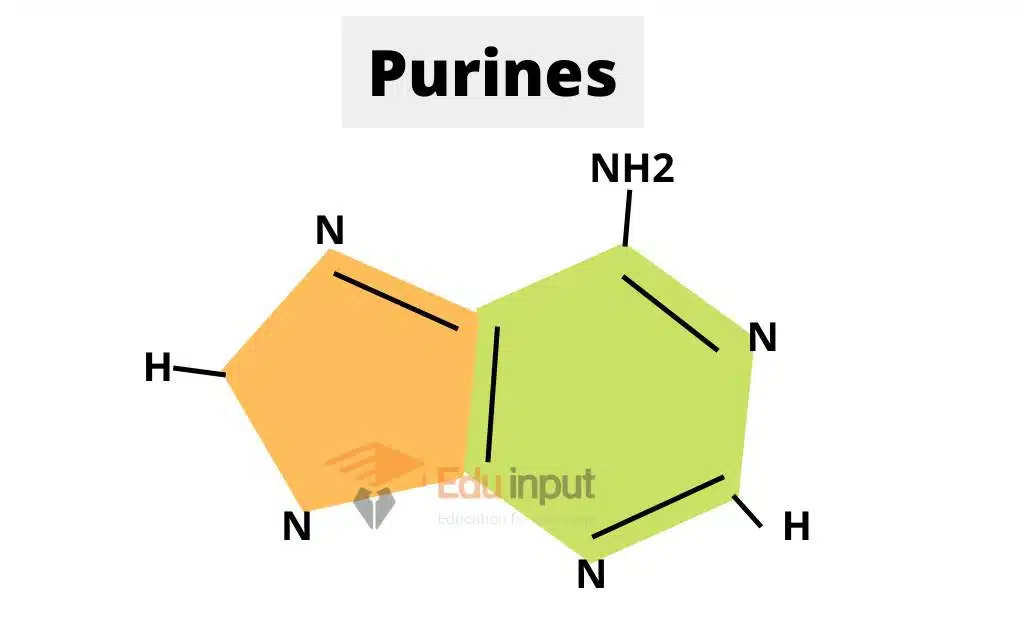
Pyrimidines
These have a single ring. Thymine and Cytosine C. RNA contains uracil, U instead of T.
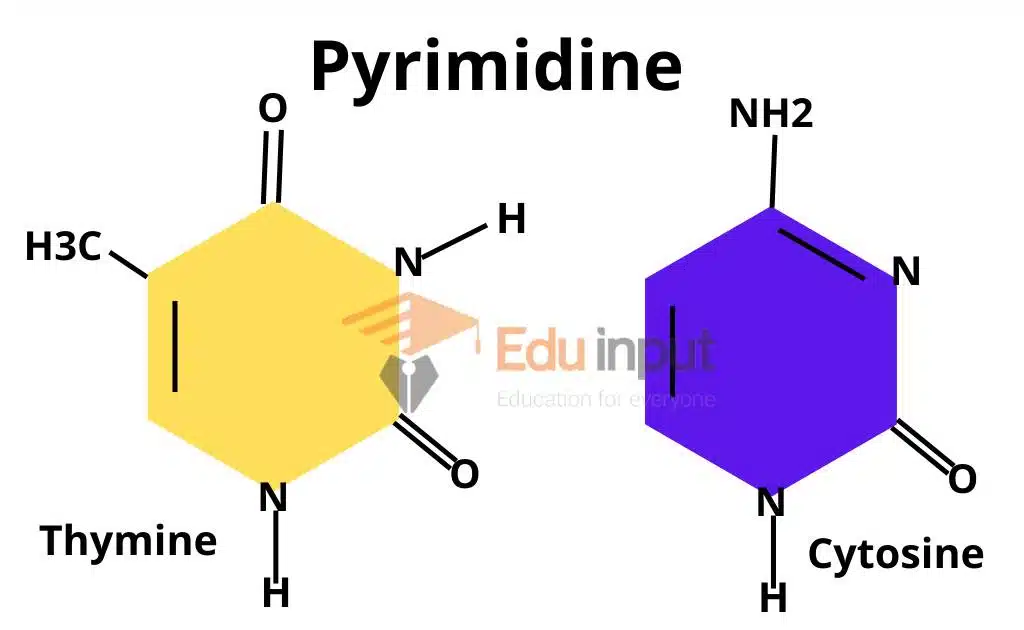
Bonding in DNA
Nitrogen base is attached to carbon number 1 of a pentose sugar in nucleotide. A Phosphate group is attached to carbon 5 of the sugar.
A free hydroxyl (OH) group is attached to the 3′ carbon atom. The 5′ phosphate and 3 hydroxyl groups react chemically with each other.
A covalent bond is formed between hydroxyl and phosphate. It links two nucleotides. This reaction releases a water molecule. So it is called dehydration action.
It allows DNA and RNA to form long chains of nucleotides, the phosphate group is linked to the two sugars by a pair of ester (P-O-C) bonds.
Nucleotides are linked through a phosphodiester bond. still a free 5′ phosphate group at one end of the two-unit polymer of this reaction and a free 3 hydroxyl group at the other end.
Thus it is available for linkage with other nucleotides. In this way, thousands of nucleotides join together in long chains.
Linear strands of DNA or RNA always have a free 5′ phosphate group at one end and a free 3′ hydroxyl group at the other.
Work of Erwin Chargaff
He proved that the amount of Adenine in DNA is always equal to the amount of Thymine. Similarly, the amount of guanine always equals the amount of cytosine. Thus there is always an equal proportion of Purine (A+G) and Pyrimidines (C+T).
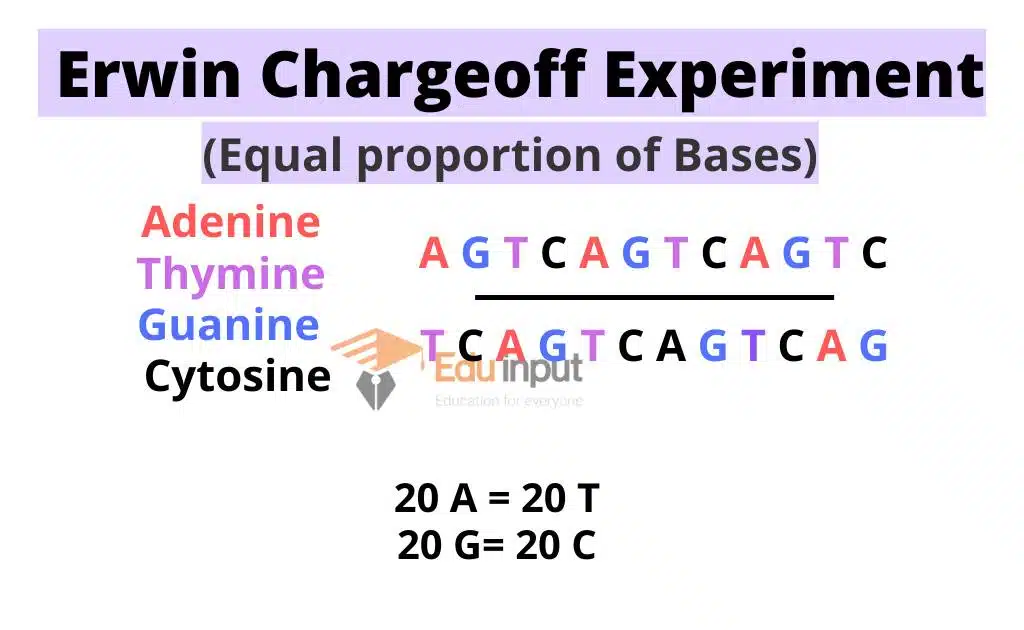
Rosalind Franklin and Maurice Wilkins
British chemist Rosalind Franklin carried out an x-ray diffraction analysis of DNA. This analysis proved the observation of the Chargeoff. He bombarded a molecule with a beam of x-rays. Rays encounter atoms.
Its path is bent or diffracted. This diffraction pattern is recorded on photographic film. This pattern gives the three-dimensional structure of a molecule.
Rosalind Franklin prepared this x-ray diffraction pattern of DNA in the laboratory of British biochemist Maurice Wilkins. Wilkins prepared DNA fibers.
The diffraction pattern suggested that the shape DNA molecule is a helix. It has a diameter of 2m. It has a complete helical turn after every 3.4nm.
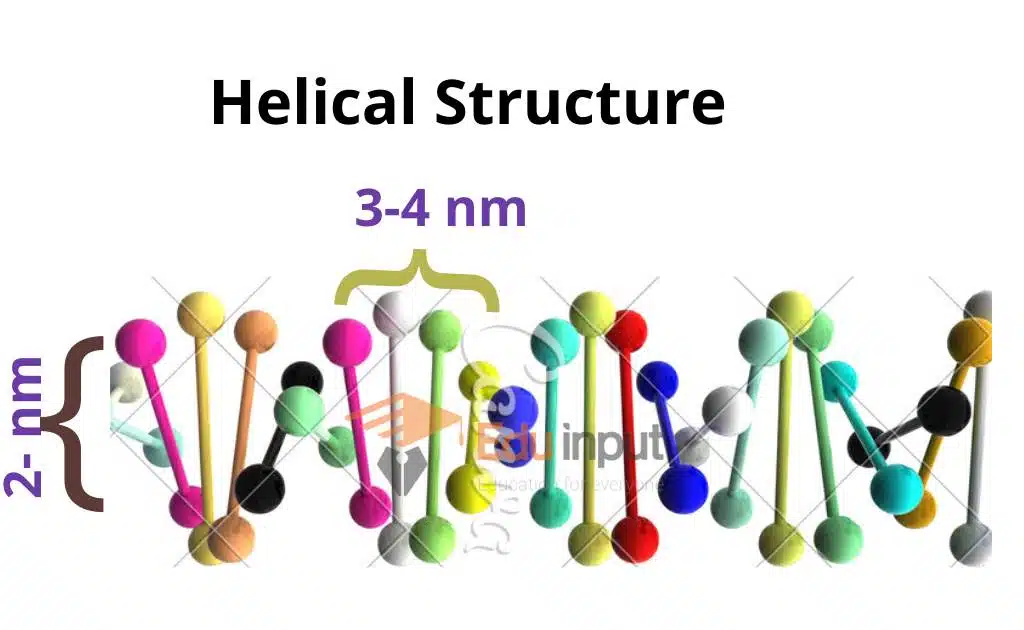
Related FAQs
What are the chemical bases of DNA?
There are four bases present in DNA;
Adenine
Cytosine
Thiamine
Guanine
Is DNA an acid?
DNA is made up of both acidic and basic components, the acidic component is the phosphate group and nitrogenous bases are basic components.
How is DNA chemically different from RNA?
DNA is different from RNA, as RNA contains Uracil base instead of Thiamine.
What is charge on DNA?
DNA is a negatively charged polymer that is made up of four nitrogenous bases.
What is the pH of DNA?
The exact pH of DNA is not known till now, but it ranges from 5-9.
Where is dna found?
DNA is primarily found in the nucleus of eukaryotic cells, but it can also be found in a smaller amount within mitochondria, and In plants, it can be found in chloroplast.

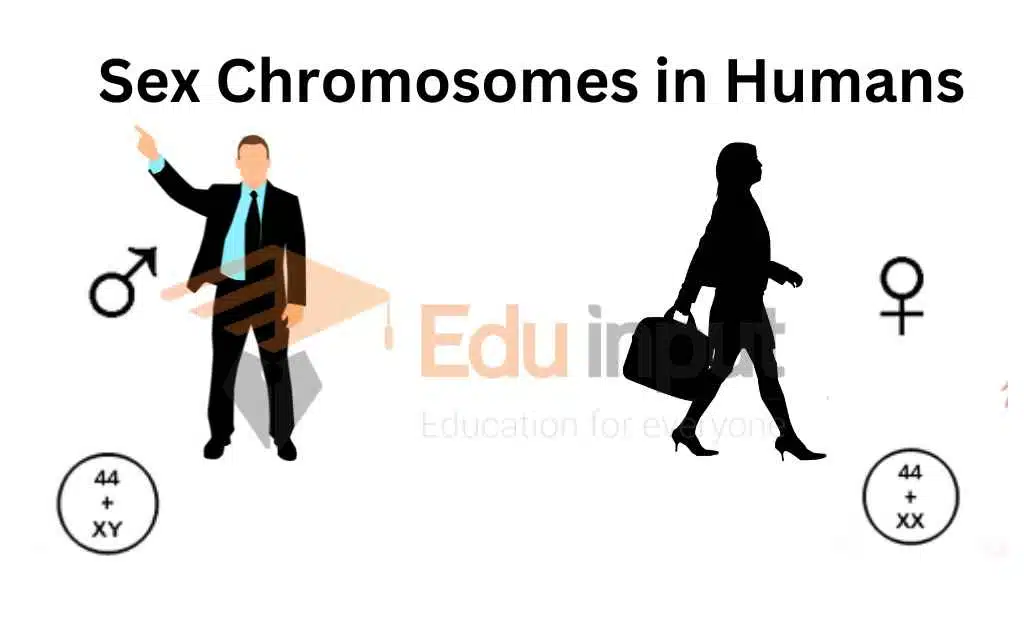
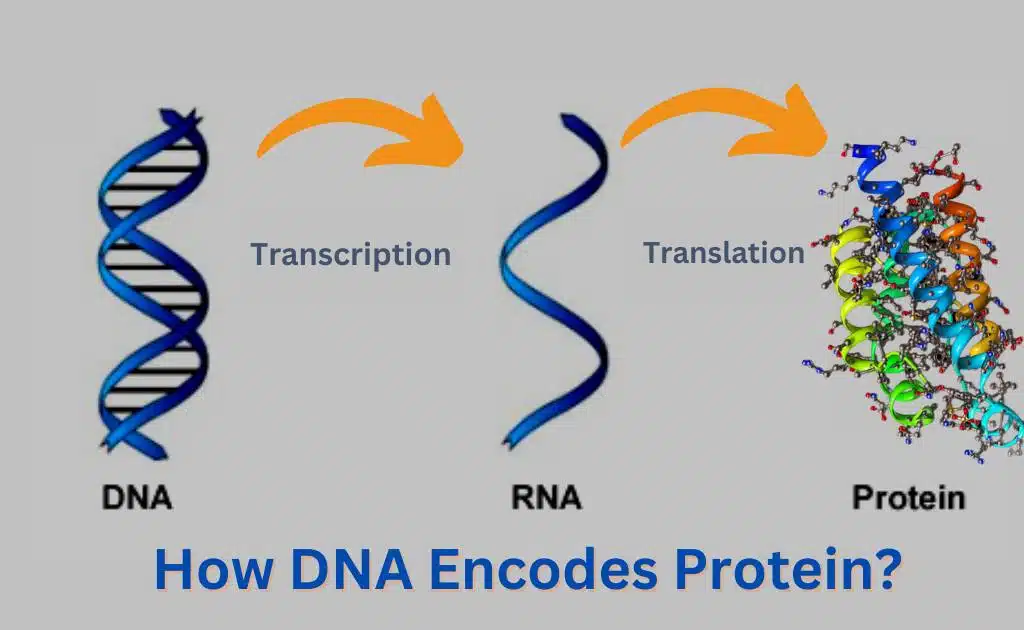
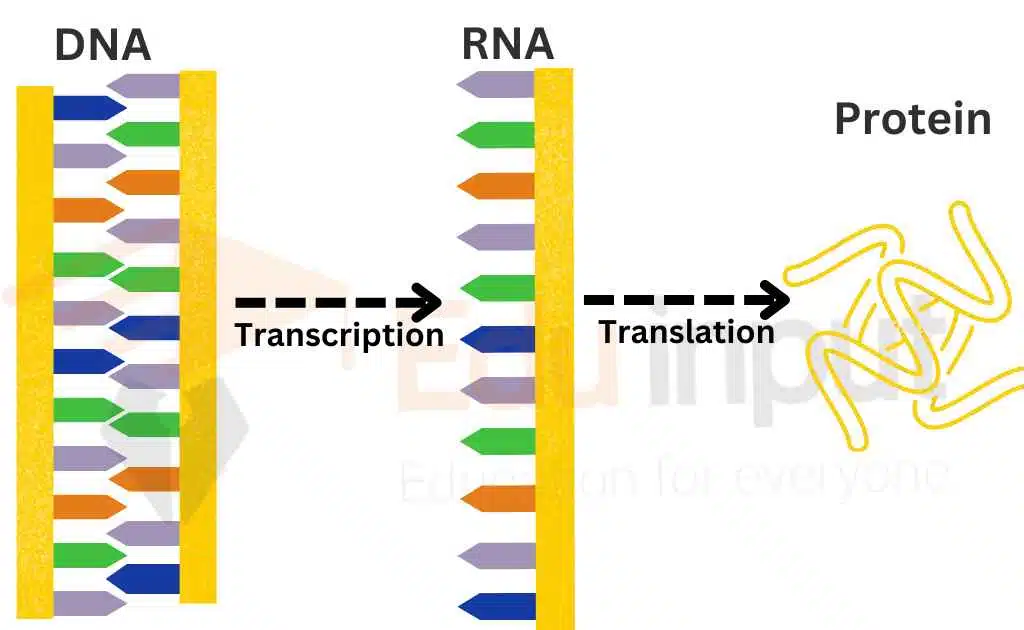



Leave a Reply